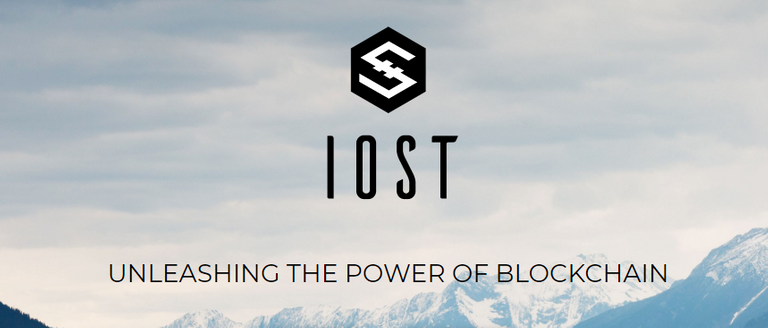
Image Source
Introduction of Blockchain
 Image from Unsplash
Image from Unsplash
It has been more than a decade since a visionary named Satoshi Nakamoto gifted us with Bitcoin. A new asset type that enabled everyone the capacity to exchange value without having to rely on any centralized authority. Bitcoin is programmable money whose transactions are immutable, irreversible and final. This was made possible through the power of blockchain, a revolutionary technology that serves as a “trust layer” to allow peer-to-peer transactions without intermediaries. By leveraging blockchain, Bitcoin has become an unstoppable force of social, political, economic and financial change.
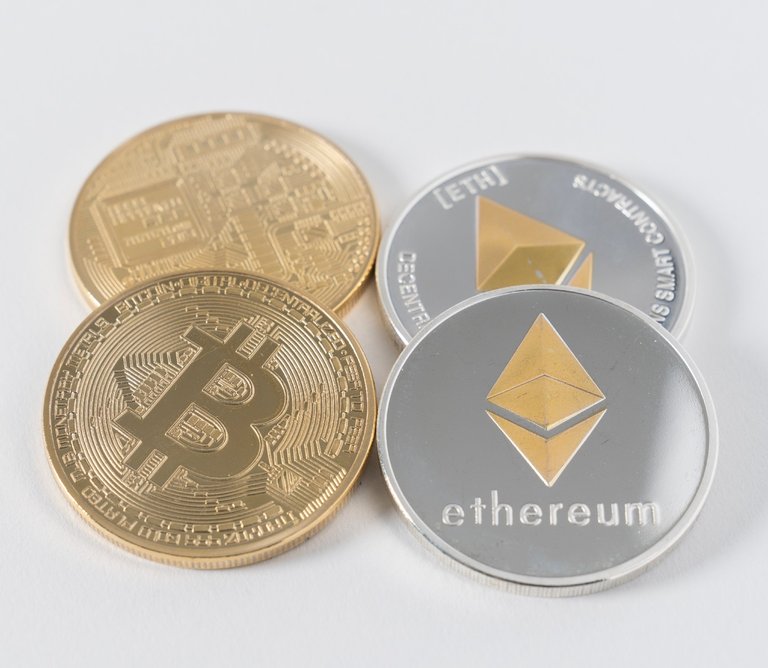 Image from Unsplash
Image from Unsplash
Not long after, other visionaries saw the potential of blockchain technology beyond the financial sector. One of which is Vitalik Buterin who created Ethereum after the bitcoin community turned down his idea of integrating smart contracts functionality. The creation of Ethereum started the next evolutionary step of this emerging technology. Blockchain 2.0 is “programmable blockchain” that opened the floodgates of innovation, providing developers with the necessary platform to create decentralized applications that goes beyond the financial realm. These include supply chain, identity, entertainment, and governance to name a few.
Unfortunately, the immense popularity of Bitcoin and Ethereum proved to be their greatest weakness as both blockchains failed to scale to accommodate user demand. Bitcoin has a theoretical limit of seven transactions per second (7 TPS). On the other hand, Ethereum has a maximum transaction bandwidth of fifteen transactions per second (15 TPS). This problem persists due to the inherent difficulty of implementing scalable technology while maintaining decentralization and security. This is a state identified by Vitalik Buterin coining the word Blockchain Trilemma.
The Blockchain Scalability Trilemma

Image Source
A Blockchain’s value emanates from these three attributes— Decentralization, Security, and Scalability, without one of these attributes, make a dysfunctional blockchain. Decentralization is important because it is the primary factor that elevates blockchain from regular databases. It is the blockchain’s main characteristic that enables it to act as a “trust layer.” Security is another key attribute that is vital to any blockchain ecosystem. It is essential to make the blockchain safe to use and resistant to any kind of threat. Finally, it should be scalable enough to accommodate present and future users on its platform. A blockchain cannot be useful if no one can use it.
The value and cost of Blockchain Decentralization
The importance of decentralization can never be overemphasized. However, to fully understand the value of decentralization we first need to know how blockchain works.
How does blockchain work?
In simple terms, a blockchain is just a network of a distributed ledger. Each of these participating ledgers (commonly called nodes) has an exact copy of data which usually consists of addresses and balances. Whenever a transaction is executed in this network, changes are recorded in each of these nodes, making sure that each of the nodes has the same set of data. This is made possible through the use of Proof of Work (PoW) consensus mechanism that ensures that there is only one version of the “truth” exists within the network. Participants in the PoW consensus protocol are called “miners.”
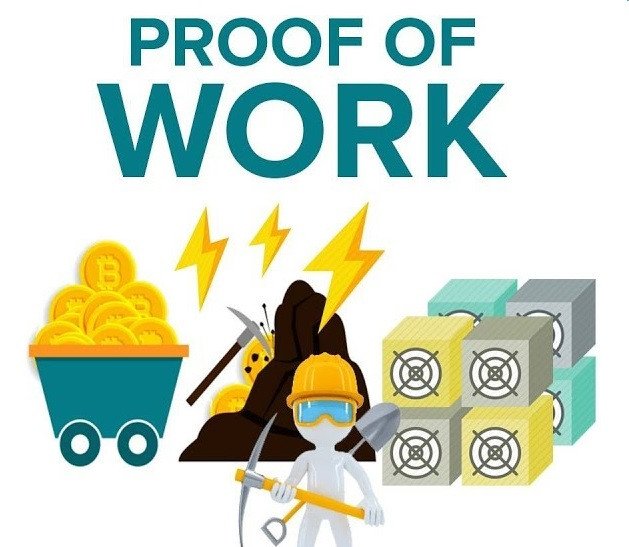
Miners are high-powered computers that solve complex computational math problems. The more computing power these computers have the faster they can solve the mathematical cryptographic problem and get more chances to write the next block. The act of writing the next block is often described as “mining the next block.” To ensure that there is only one version of the “truth” only one “miner” is allowed to write the next set of data or block in a blockchain. This block is then confirmed by other miners and transmitted through the whole network so that all nodes will have the same record of data, therefore, achieving consensus.
The miner who writes the block is then rewarded with freshly minted coins which we call the block reward which currently stands at 12.5 BTC for Bitcoin. This is on top of the transaction fees paid by users when they want to send their cryptocurrencies. The competitive nature of mining ensures the decentralization of the creation of new blocks through the random selection of miners. Furthermore, the newly updated blockchain record is then transmitted to the different nodes in the network ensuring they all have the same data. Blocks that have been written in the blockchain can never be erased, changed or reversed.
Value of Decentralized Blockchain
Decentralization of blockchain results in Immutability, transparency, and redundancy. This makes the blockchain secure, safe and unstoppable. More importantly, it enables blockchain to function as a trust layer, as users are guaranteed their transactions are final and irreversible. This means transactions can’t be stopped, no risky centralized databases, and no single authority that decides who can use the network. Furthermore, blockchain-based applications cannot be weaponized or used as a medium of oppression, collusion or coercion.

Image Source
Decentralized blockchains empower true ownership. Money in banks can be frozen, debits cards can be denied, payment processors can stop payments and countries can restrict the outflow of capital. With bitcoin, there is no way for others to freeze, deny or stop payments. Even governments cannot stop it. There is no centralized infrastructure that can be targeted, no central authority that can be coerced and no single point of failure that can be exploited. Moreover, true ownership does not only applies to money it can also be applied to other digital assets such as identity, data, digital items, and any other digital ownerships.
Cost of Decentralized
Decentralized blockchain comes at a huge cost. In fact, it can be said that today’s most popular blockchains are accelerating the existential risk of climate change to mankind. The ever increasing power requirements of mining equipment that help secure blockchains have reached a point that it consumes as much energy as Austria as shown in the graph below.

Image Source
The highly inefficient consensus protocol of two of the most dominant blockchains in the world brings us to question if the advantages of these blockchains are enough justifications to risk a monumental environmental disaster that could kill off most of the population of the world. However, some may argue that most crypto mining activities now use renewable energy and heat generated by mining equipment is recovered and converted to other purposes. Those are indeed great developments, however, these energy sources could have been of better use reducing dependency on fossil fuel energy.
Blockchain 3.0
Blockchain 1.0 brought us “programmable money” Bitcoin; Blockchain 2.0 brought us “programmable blockchain” Ethereum with its smart contract platform; Blockchain 3.0 brings “scalable and power-efficient blockchain 2.0.” This was made possible by introducing a new consensus mechanism called Proof of Stake (PoS) consensus protocol. This is now widely considered a more cost-effective and power-efficient alternative to Proof of Work (PoW). Unlike PoW, PoS does not require expensive high-powered computers that are not only hard to setup but easily get outdated.
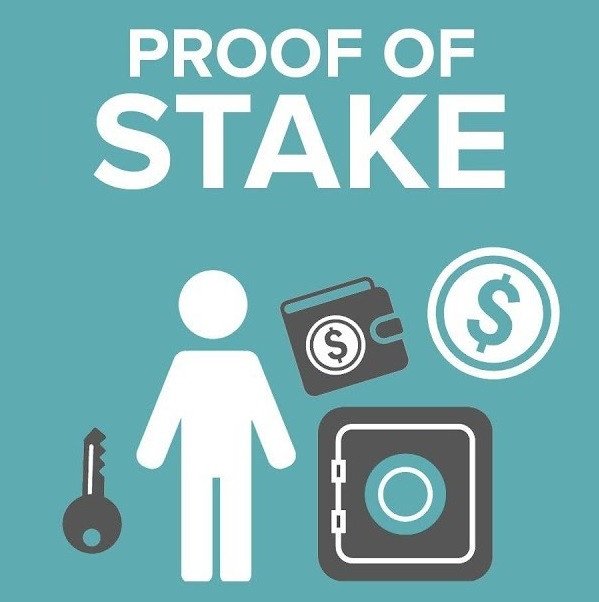
Proof of Stake (PoS) achieves consensus through the process of “Staking” and the selection of “validators” that takes on the role of “miners.” If the miner’s chance of being selected to write the next block is relative to the computing power of their mining equipment, the chance of validator being selected is the amount of Cryptocurrency they Stake. Like miners, these validators are rewarded with newly minted coins. To make PoS consensus protocol more scalable a variant of PoS was created. It was dubbed Delegated Proof of Stake, invented by American computer scientist Daniel Larimer, founder of EOS.
Delegated Proof of Stake (DPoS)
In DPoS, token holders are not directly involved in the consensus mechanism, instead, they elect delegates that act as validators. There are only a limited number of slots available for elected delegates and this defers from one DPoS blockchain to another. All DPoS token holders can participate in elections by staking their tokens. Staked tokens in DPoS become the token holders voting weight. 1 staked token is equivalent to one vote. This means if 100 token holders with 1 staked token in their account voted, this is just equivalent to 1 token holder voting with 100 Tokens staked.
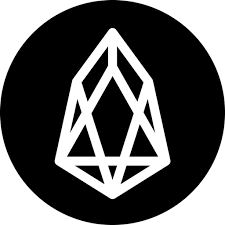
Having a limited number of participants in the consensus mechanism enables DPoS-based blockchains to scale better. One of the most successful DPoS blockchains is EOSIO which purportedly scales several orders of magnitude better than Ethereum. However, the strong affinity of EOS towards scalability and lesser focus on decentralization has been a major pain point for decentralized application (dApps) developers. As a result, many developers still prefer Ethereum as their go-to smart contract platform because of its superior decentralization features and the prospect of it to scale in the future.
The prevalence of higher quality dApps in the Ethereum network despite the presence of a popular alternative just proves our case that decentralization takes front and center in the blockchain trilemma. Blockchain 3.0 might be more scalable and less power-hungry than the previous blockchains generations, but without a comparable degree of decentralization, it just does not make the cut.
IOST next-generation blockchain
Before we explore IOST’s blockchain let us review the previous generations of blockchain. They will be represented by the most popular and most liquid market. Bitcoin for Blockchain 1.0, Ethereum for Blockchain 2.0 and EOS for Blockchain 3.0. We will highlight their weaknesses and later on explain how IOST solved these issues.
Problems of previous-gen blockchains

Image Source from Upsplash
Scalability and transaction fees
Blockchain 1.0 and blockchain 2.0 share the basic problem. They just don’t scale and when they are operating beyond their capacity, their transaction fees shoot off the roof. Transactions take hours or even days to confirm. In addition to this, transaction fees are often several times more than expensive than the transaction itself. There had been cases where users are charged a $10 transaction fee for a $1 transaction. This is the result of the Highest-Fee-First-Serve (HFFS) transaction scheduling model used by the top two cryptocurrencies by market capitalization— Bitcoin and Ethereum.
Centralization challenges
Blockchain 3.0 seems to have solved most of the issues of the previous generations of blockchains. The most prominent 3rd gen blockchain is EOS which leverages Delegated Proof of Stake (DPoS) to scale better. It has done away with transaction fees by introducing an operating system-like resource abstraction and allocation which we will discuss later. However, despite providing a more scalable blockchain it is unable to surpass Ethereum as the premier smart contract platform due to reasons already mentioned above. Furthermore, resource availability fluctuates tremendously which renders EOS useless sometimes.
Resource Abstraction and Allocation
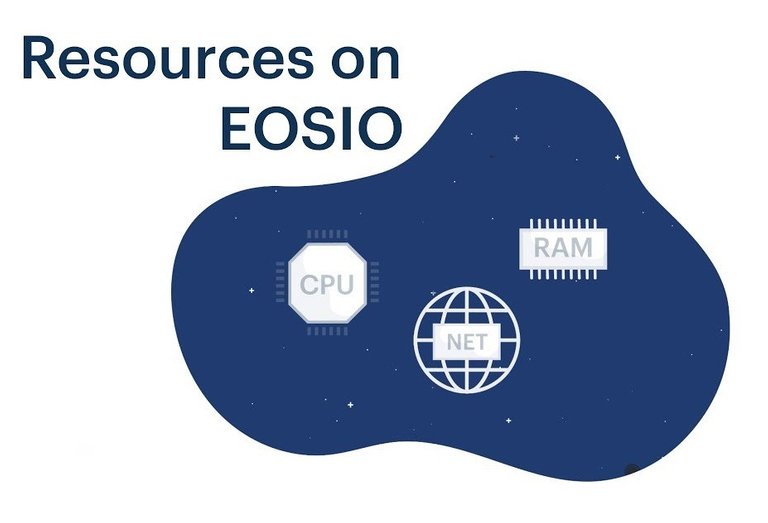
To make EOS fee-less its developers introduced an OS-like resource abstraction and allocation layer in the form of CPU, NET, and RAM. These represent computational, network and storage resources in the EOS blockchain. Instead of having to pay transaction fees, EOS uses these resources to execute transactions within its network. The amount of EOS coins you stake on the platform relative to the total EOS staked in the whole network represents your allocation of resources. This means if you have held and staked 1% of the total staked EOS coins you are allocated with 1% of the total resource in the network.
The DPoS and OS-like resources were a powerful combination that brought scalability and feeless-transactions. However, there is a major flaw in the implementation of the latter in EOS. The severe fluctuations in the availability of CPU resources make the network unstable, unusable and open to vulnerabilities. The existence of “Resource Exchange” aggravates this by allowing a small number of users to lease resources for a limited time, hogging much of the CPU resources effectively taking control of the network. Users with fewer CPU resources will not be able to use the network.
IOST- Blockchain Unleashed
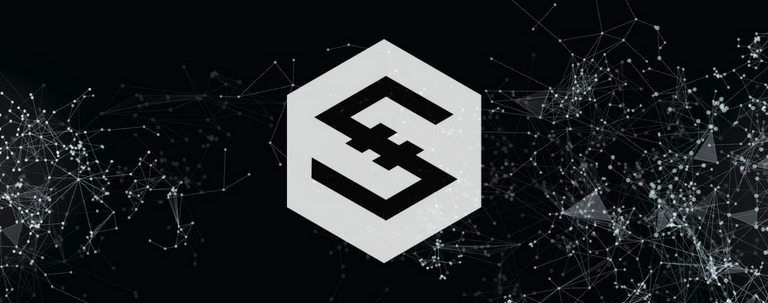
Image Source
IOST stands for Internet of Services Token, a new blockhain that recently launched its mainnet last February 25th, 2019 after a private token sale in December 2017. It was able to raise around $35MM via a private token sale. The main aim of the project is to provide a secure and scalable enterprise-level blockchain infrastructure for the internet of services. In order to achieve this, the IOST team plans to leverage its own proprietary consensus protocol that has the advantages of a scalable blockchain without sacrificing the decentralization, the most important and value-adding attribute of the blockchain.
IOST is a better implementation of a smart contract platform compared to Ethereum and EOS. It offers ultra-fast blockchain performance with an average throughput of 7,000-8,000 transactions per second. It does this without sacrificing decentralization through the utilization of the Proof-of-Believability (PoB) consensus algorithm. PoB offers a more decentralized voting and committee (group of validators) election process through the introduction of the Servi point system. This system guarantees increased variation of group validators as well as its faster rate of change, achieving a much higher degree of decentralization than EOS.
What is PoB and how does it help IOST decentralization?
Proof of Believability (PoB) is an innovative consensus technology that improves upon Proof of Stake consensus protocol proposed by Sunny King and Scott Nadal in 2012 as a more power-efficient consensus protocol to replace proof of work. It is somewhat similar to the Delegated Proof of Stake (DPoS) consensus mechanism but has a more decentralized mechanism for voting, participation and electing the committee that engages in block production and validation. However, unlike EOS, PoB has a mechanism to rotate committee members called the Servi Point system.
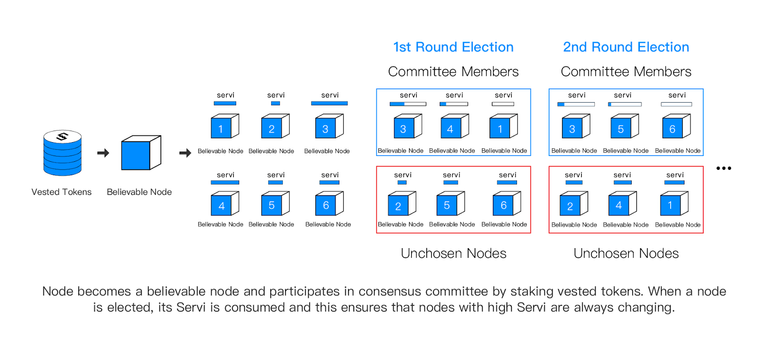
Image Source
In PoB there are 17 block production committee seats. Each of these seats is occupied by an elected candidate with the highest number of votes which also serves as their Servi Points. Once the committee member selection is completed, each member takes turns to produce one block, while the others validate all blocks. This will continue for 10 minutes until a new set of committee members are elected. In the next round, the Servi Points of the 17th rank committee member will be deducted to all committee members of the previous round giving the unselected candidates from the previous round a greater chance of getting selected.
By utilizing this consensus mechanism there may be hundreds of different candidates selected for the committee each day. This lowers the barrier to become a selected candidate allowing more community members able to participate. Changing the composition of participating block producers and validators every 10 minutes increases IOST’s degree of decentralization. This is in contrast to EOS which has no mechanism to rotate committee members. This only means that it is highly likely that the existing 21 Block producers will stay in the committee and produce all blocks.
IOST Resource Abstraction and Allocation
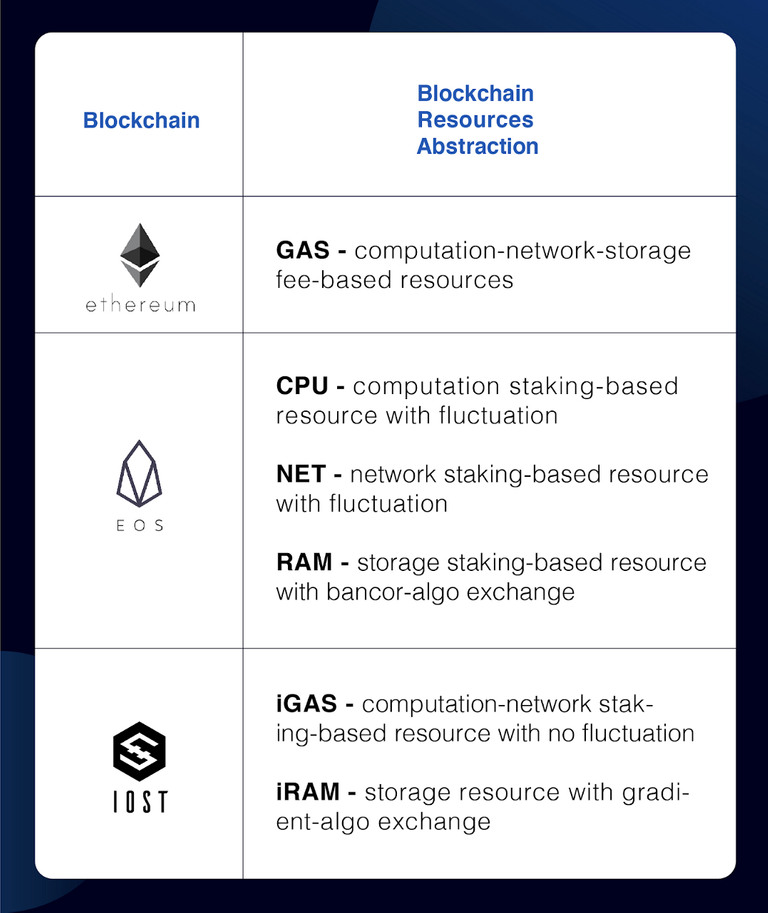
IOST introduces a more effective and stable resource abstraction and allocation compared to previous iterations of the blockchain. IOST developers have struck a perfect balance between having too many separate resources to configure that unnecessarily complicates usage and oversimplified resource abstraction that lowers effective utilization.
EOS uses three blockchain resource abstraction which we have discussed earlier. On the other hand, Ethereum bundled all computation, network and storage resource abstraction into one which consumes ETHER Gas.
IOST blockchain resource abstraction is perfectly balanced at two. These two are the iGAS and iRAM. The rationale behind this configuration is quite simple. First, most computing and network resources are always used jointly. Thus integrating them into one resource abstraction called IGAS is logical. Second, applications are either CPU-sensitive or storage sensitive. Since CPU has already been bundled with Network, storage has been configured as a separate resource called IRAM. Using this configuration enhances the utilization of computational and storage resources at the same time lowering the complexity of use.
iGAS and iRAM
iGAS is the combined NET (bandwidth) and CPU (computing power) resource. They are used to pay transaction fees on the IOST mainnet. You can get iGAS for free daily by staking IOST. Staking 1 IOST gets you around 100,000 iGas per day. You can get an iGAS maximum of 300,000 times the number of IOST you Staked. Once this number is reached no additional iGAS will be added to your account not unless it goes below this level in which it resumes the same rate. Since iGAS regenerates every day, transactions in IOST are essentially free so long as you stake enough IOST.
As a general rule, your transaction will be processed faster if you pay more iGAS. Once a transaction initiates, the system retrieves the amount of iGAS that is available in the account of the transaction initiator. This amount will be used to pay for the transaction fees. The method of calculating iGas required for a transaction is shown below:
iGAS quantity = CGas (Command Gas) consumption* number of commands * Gas rate
This formula is an effective deterrent for large token holders staking a large amount of IOST to monopolize a significant share of the system resources. This presents a more level playing field for all participants in the IOST ecosystem. In addition to this, it improves the overall efficiency of the utilization of the system reserves.
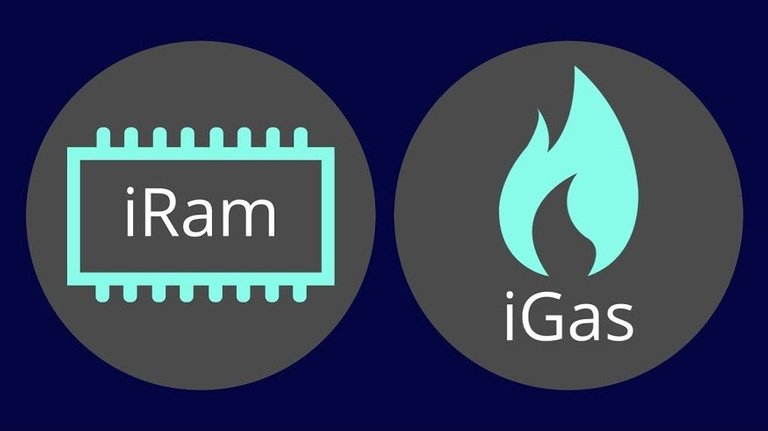
Image Source
iRAM is IOST’s storage resource. It is used to store data on the IOST blockchain. This uses the Bancor algorithm for calculations and is a limited resource that can only be traded once. Users can purchase and sell iRAM to the IOST system. Buying and selling iRAM carries a 2% admin fee that is burnt. Users need iRAM to sign new IOST accounts, on the other hand, dApps will use iRAM to store state information of their application. Users without enough iRAM will not be able to sign new IOST accounts, conversely, insufficient iRAM for dApps means the inability to carry out operations and executions of smart contracts.
Unlike iGAS, iRAM is not given out for free or regenerates when it is depleted. Instead, if users or dApps developers needing more storage resources must buy them from the system. iRAM cannot be traded among users and thus it is not subject to wild price fluctuations similar to EOS. This makes IOST blockchain highly resistant to issues that may arise from erratic price swings in iRAM. EOS developers are exposed to exchange rate risk between RAM and EOS coins. Lastly, EOS devs usually will not receive the same amount of tokens they have staked.
Transaction Scheduling Model (TSM)
TSM is the prioritization method of blockchain to determine which transaction request should be processed first. Earlier, we already stated that Bitcoin and Ethereum use the Highest-Fee-First-Service (HFFS) model where transactions are processed in the order of their transaction fees. When the network is operating beyond its capacity users can pay more fees for their transactions to push through. The inability of both blockchains to scale resulted in ridiculously long confirmation times and astronomical transaction fees. This exposes users to unnecessary risks, especially when transacting trades.

Image Source
On the other hand, EOS uses a First-Come-First-Serve (FCFS) model, transactions in this model are processed in the order they were submitted. If the network is over capacity participants should wait in line until prior transactions are done. This TSM does not guarantee transactions will push through and in danger of getting dropped due to a lack of resources. FCFS and the highly volatile nature of EOS’ resource availability makes a very unpredictable blockchain that has enough resources to use at one time and none at another.
IOST’s TSM uses the Highest-Fee-First-Service (HFFS) model like Bitcoin and Ethereum. transactions are processed in the order of their transaction fees. However, transaction fees are paid with iGAS which are generated for free when you Stake IOST tokens. Making it HFFS a without transactions. This makes IOST TSM implementation better since users can “push” their transactions to go through with little or no additional expenses.
What is IOST’s value proposition?
The value proposition of IOST is not that hard to identify. We can simply derive it from the value propositions of the previous blockchains that came before it. To put it simply it is a blockchain that is more scalable and power-efficient than Bitcoin and Ethereum. It's more decentralized, less complicated and stable blockchain than EOS. In other words, it is the only blockchain today that has effectively address the Blockchain Trilemma that has haunted developers for years. For the very first time there exists a blockchain infrastructure that is actually ready for mass adoption.

What IOST has to offer does not end there. To be able to create a successful blockchain ecosystem offering the best technology is not enough. Most projects build their network by taking the “field of dreams approach” hoping that once they have built the infrastructure users will come and start using their platform. Unfortunately, most of the time, users do not come as they have no idea what blockchain is or even worse, do not really care enough to learn more about the technology and what value it has to offer since there are existing products that are easier to understand and use.
This approach may have some success in the past, however the current market condition right now makes it difficult to attract users. There are just too many projects diluting the space and too many broken promises from other projects that have not delivered on their promise. This is on top of the fact that most projects are overly complicated to use for the ordinary masses to use. Take Bitcoin and Ethereum for example. Bitcoin is taunted to be programmable money but up until not cannot be programed to act as one. The same can be said with Ethereum, the programmable blockchain.

Image from Upsplash
EOS showed some promise. It was fast and fee-less and it even has human readable addresses. Unfortunately this innovations were overshadowed by the introduction of more complicated issues. Try making an EOS account and you will see. It is not only an overly complicated process that requires you to have access to an already existing account, but also, an unexpected expense. Why would you ask people to pay for something that they normally get free with other blockchains even with previous generation ones? For a new user, it is like asking them to pay to get a chance to watch a movie trailer.
The problem of EOS does not end there. After creating the account users will have to continuously monitor resources to be able to use their account. New account holders may unable to use their account effectively due to the lack of one of the three resources required to execute a transaction. To make matters worse, there is a fluctuation resource availability in EOS that puts users at risk of suddenly not having enough resources to execute a transaction even though previously they have.
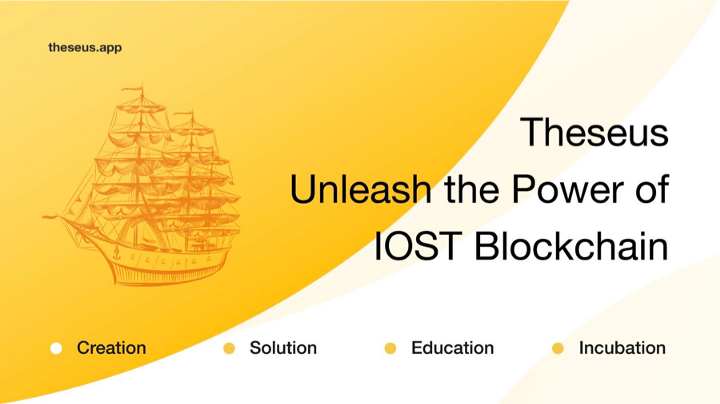
Image Source
Instead of hoping people to come and use their network IOST jump that gun by incubating teams and projects that will enable it to achieve instant mass adoption by the time its mainnet launches. One concrete example of this is Theseus, an IOST-incubated research and development team that seeks and selects industries best suited for blockchain technology. The team is also tasked to develop practical applications for industries that can be transformed by IOST’s blockchain. Theseus is also backed by top institutional investors such as Sequoia Capital China, Matric Partners China, ZhenFund and K2VC.
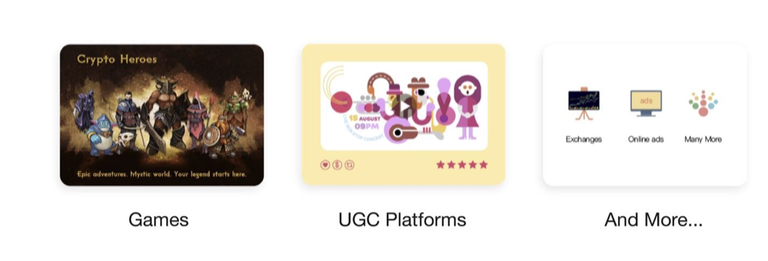
Image Source
Similarly, following a $50 million funding IOST launched Bluehill, a blockchain incubator and accelerator to support partnership projects, dApp development and other blockchain advancement within the IOST ecosystem. It has already has an established team of over 50 full time staff and has offices around the world including China, South Korea, Singapore, United States and Germany. Bluehill will work closely with projects and teams developing and improving IOST network. It will provide funding, operations, marketing, HR, recruitment, and advisorship and industry partners. Bluehill will act the role of ConsenSys to Ethereum.
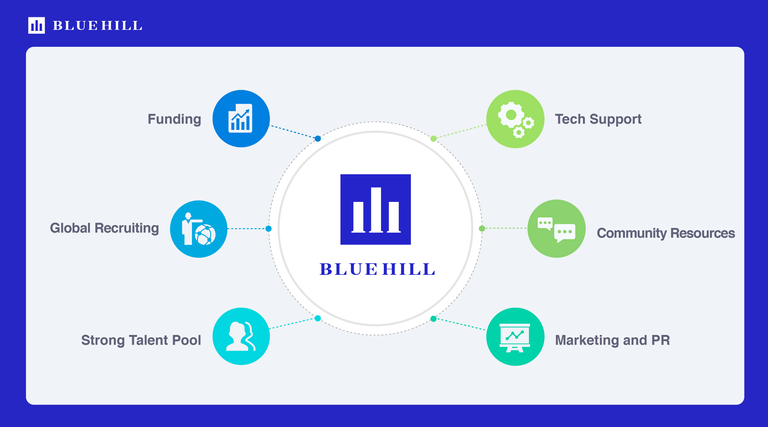
Image Source
Theseus researches and identifies industries where IOST’s blockchain technology can be effectively applied. Bluehill, on the other hand, provides business support for projects that wants to build on top of IOST platform. OASIS is another team co-invested by IOST with the main aim of exploring real-world use of various applications and create solutions that enables users to access IOST network without the various technical challenges experienced by new users. Their technology will serve as an abstraction layer for new users of blockchain technology.
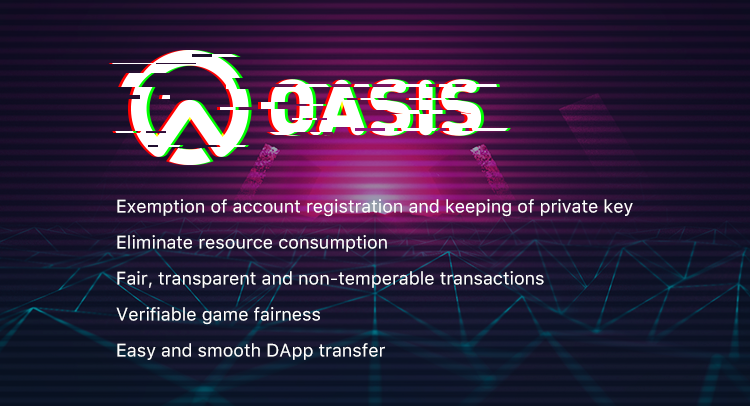
Image Source
IOST’s affiliation with Theseus, Bluehill and Oasis gives us a clear idea how IOST wants to develop its network. It is taking a holistic approach making sure that all stakeholders will be able to develop and grow with them. Retail and institutional users are given a blockchain that is fast, fee-less, secure, functional and user friendly. Developers are provided with the necessary tools and business support to enable them to deliver successful and high quality dApps. Investors and Token holders are assured by continuously improving their tech, on-boarding high value partnerships and creating relevant application that will increase the utility of its Tech and Token.This is on top of IOST token consistently being one of the best staking tokens worldwide.
Their strategy was so effective that in a short period of time after its mainnet IOST has grown to become one of the big four public chains in the industry. Its growth is so explosive that it has reached block height of 15,396,117 in just 80 days, which according to historical data is the fastest to ever reach this height compared to the other leading dApps public chains. This performance did not come as a surprise as IOST and its affiliates have been working hard to onboard dApps applications.
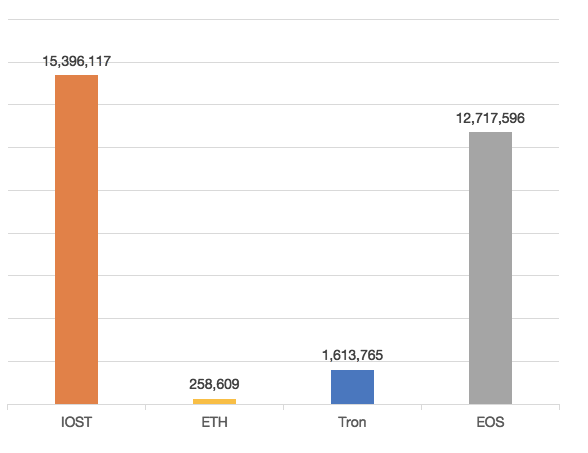
Image Source
Aside from aggressively pursuing partnerships and collaborations within and outside the blockchain industry IOST also incubated the Bermi protocol. It is decentralized data governance protocol for the governance and fair distribution of news, content and data.The Bermi team is based in New York with team members coming from companies like Google, Facebook, and Bloomberg to name a few. It has launched two highly successful flagship products namely Berminal and Bermi. The former is a crypto news app with over 1M of members and around 50K daily users, the latter is a fast growing content platform with over 1 million users. Bermi protocol has since then rebranded to Emogi and continues to grow, making good of IOST’s promise if getting millions of users into blockchain.

image source
Berminal and Bermi are considered IOST’s first killer app that have achieved mass adoption. With over 6 million combined users who are earning and helping secure the network through active participation and staking IOST-based token Emogi (LOL). Berminal is a realtime blockchain and crypto news sharing platform while Bermi is a short video sharing platform that has gained much traction in Latin America. This highlights the potential of IOST’s blockchain technology that is superior to other leading blockchain platform.
Final thoughts

Image Source
IOST truly adheres to the quintessential values of blockchain technology— decentralized, transparent, impartial, immutable, censorship-resistant, secure and inclusive. It has established a team that has the expertise, experience, knowledge and will to create a scalable, usable and secure blockchain in a complete and timely fashion. More importantly the team's willingness to work with regulators, governments, diverse group of users and other blockchain projects shows their maturity and sophistication to understand that for the industry to thrive requires the active participation of all stakeholders.
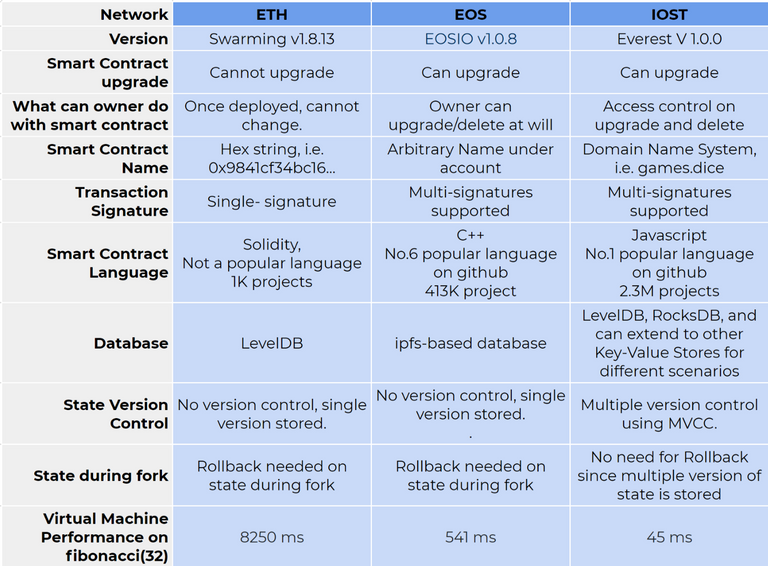
Image Source
Moreover, they have developed the blockchain technology that surpasses any other blockchain solution we have seen so far without compromising any of the Blockchain’s attributes that makes it so revolutionary. This effectively solves the “Blockchain Trilemma” that has persisted in the industry for years. In doing so, it has broken down many barriers that have hindered previous generation blockchains to achieve mas adoption. This sets the stage where blockchain-based apps can intersect with traditional tech and ordinary users, giving them a front row seat to witness the disruptive power of the blockchain Technology.
Furthermore, developers were given the necessary tools and support to create relevant and useful application that leverages blockchain technology in a more effective and meaningful way. This empowered developers to disrupt or imbue more value into various industriesintroducing blockchain-based alternatives. Lastly, IOST has established a highly successful track record through its many partnerships, investments and collaborations that has resulted in a tremendous growth of IOST-base dApps and IOST users, which has now grown to the fourth largest public chain in the space.
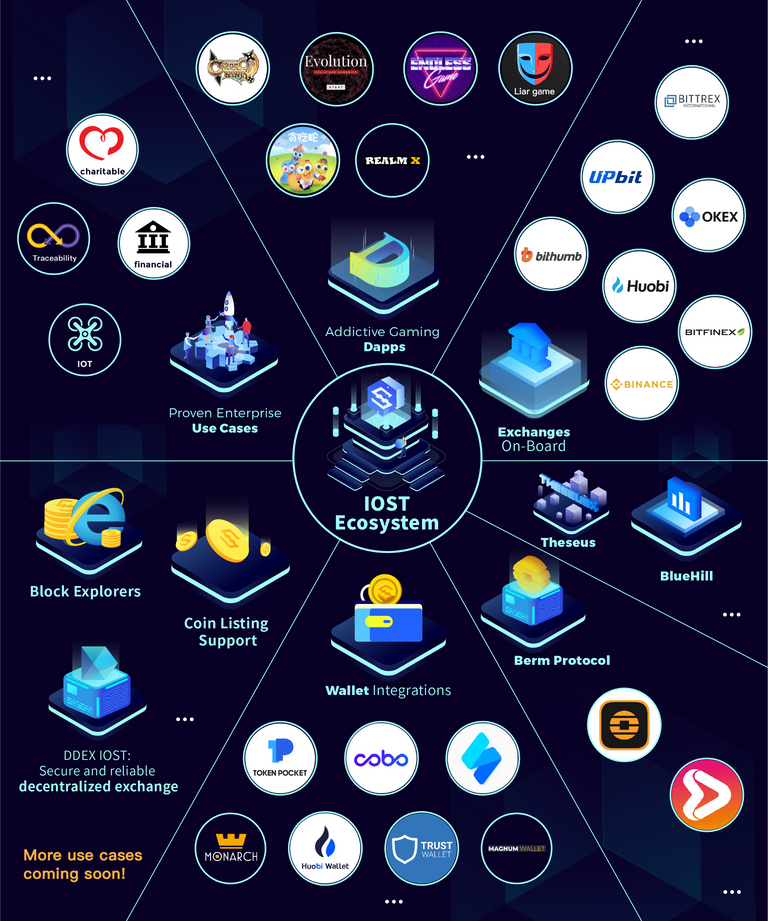
The most impressive characteristic of IOST is its relentless pursuit of blockchain’s fullest potential. This is evident in all of its actions. From the constant refinement of its existing technologies to the continuous on-boarding of users and partners into its ecosystem. Each of its action is an opportunity for improvement and growth. This is complemented by IOST’s high degree of business agility to react to threats, opportunities and trends. IOST’s ability to rapidly adapt and put into action changes efficiently and effectively, coupled with what we have said earlier, places it on the very top of the Blockchain echelon.










It's always pleasant to read your substantial inputs.
Thank you so much! 😊
Hi @ankarlie, a free $trendotoken from the TULIP Mania Game!
You have received this message because you are either playing Round 2 or you still have tokens that need to be sold during this round to realise your profits. Thanks!
Congratulations @busbecq, you are successfuly trended the post that shared by @ankarlie!
@ankarlie will receive 8.46955238 TRDO & @busbecq will get 5.64636825 TRDO curation in 3 Days from Post Created Date!
"Call TRDO, Your Comment Worth Something!"
To view or trade TRDO go to steem-engine.com
Join TRDO Discord Channel or Join TRDO Web Site
Nice content, it cleared my questions on this subject.
Posted using Partiko Android
Thankn you @jurich60 if you need clarifications about the IOST please let me know.
Superb
Keep it up darling
Yes IOST is truly superb! One of the most undervalued smart contract platform today
thank you so much for the informative post.
Thank you for passing by! 🙋♀️
Congratulations @ankarlie, your post successfully recieved 8.46955238 TRDO from below listed TRENDO callers:
To view or trade TRDO go to steem-engine.com
Join TRDO Discord Channel or Join TRDO Web Site